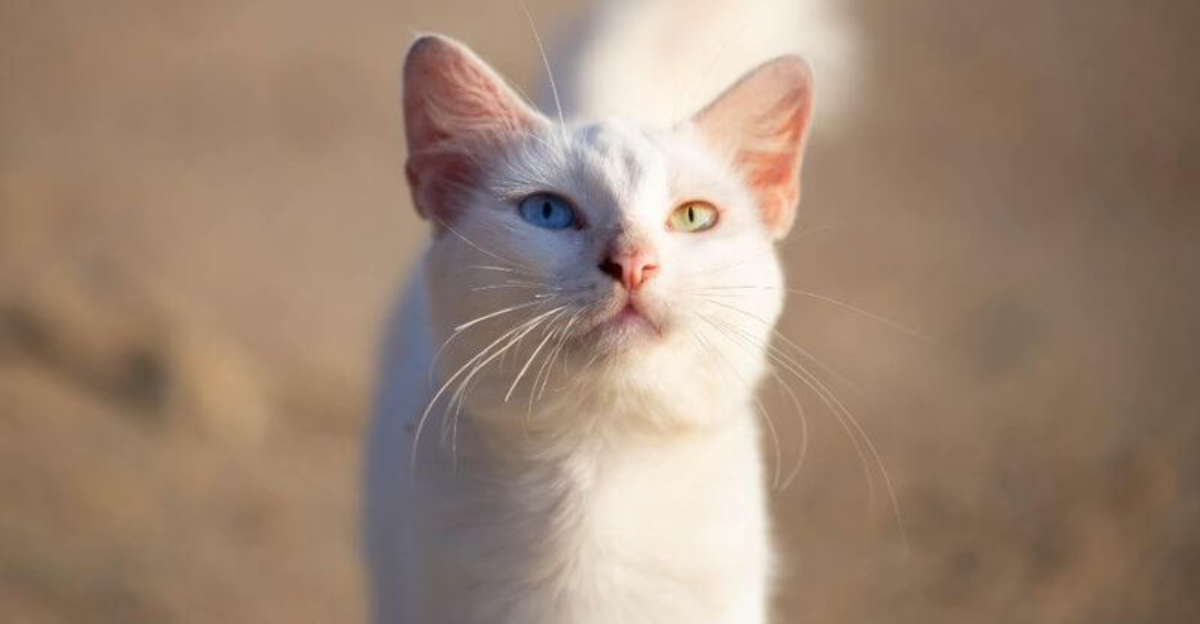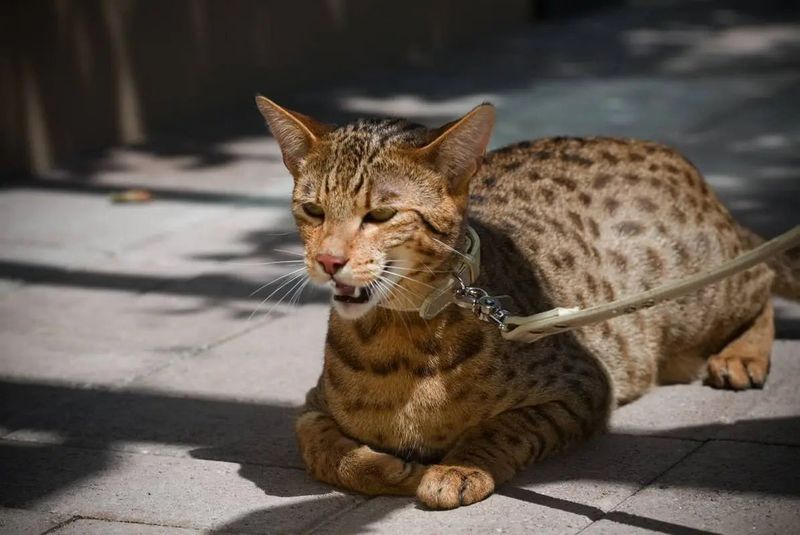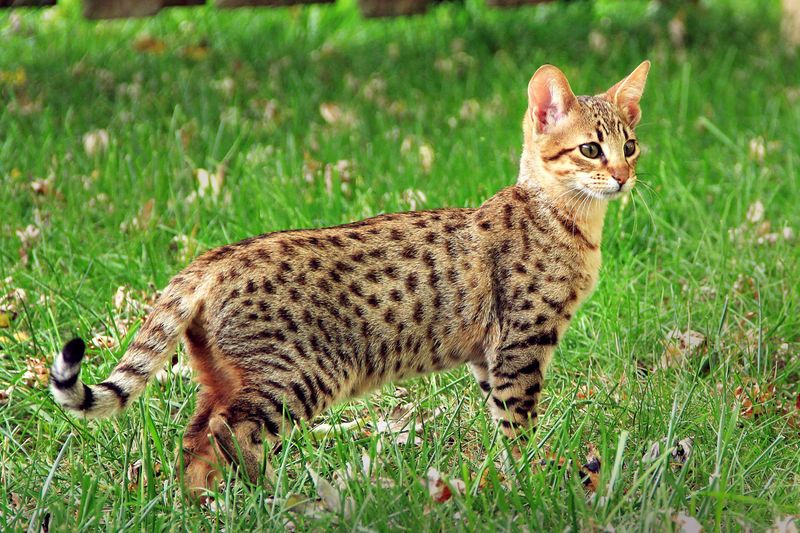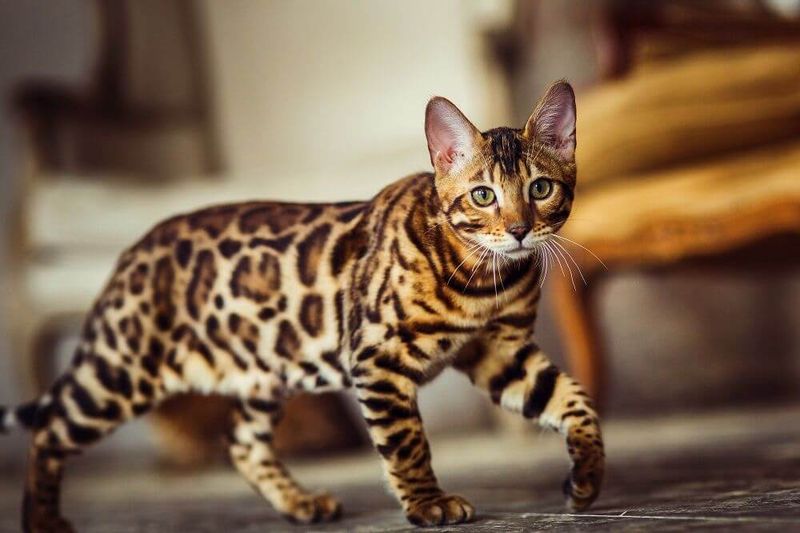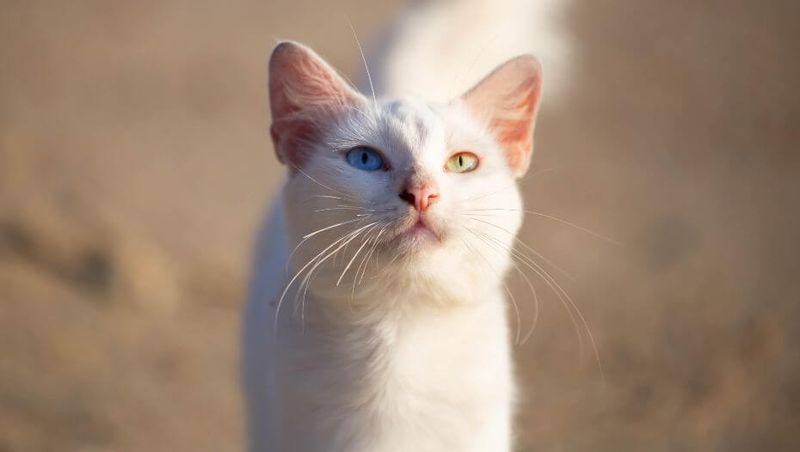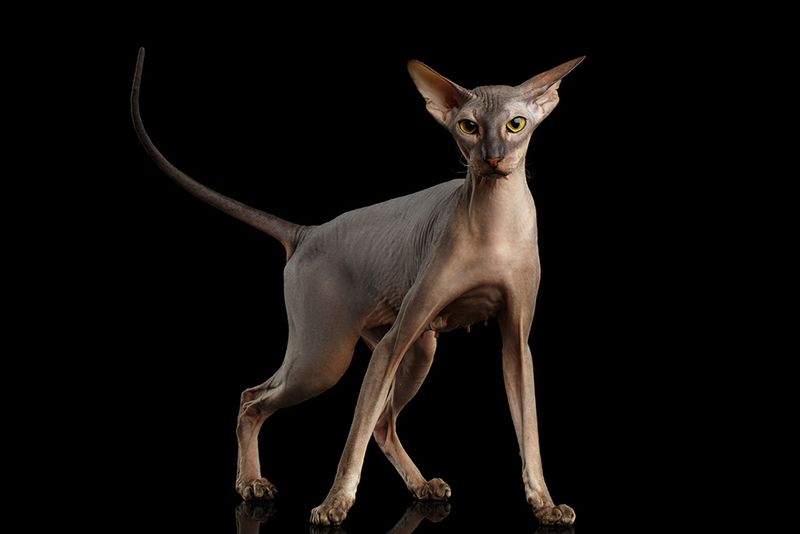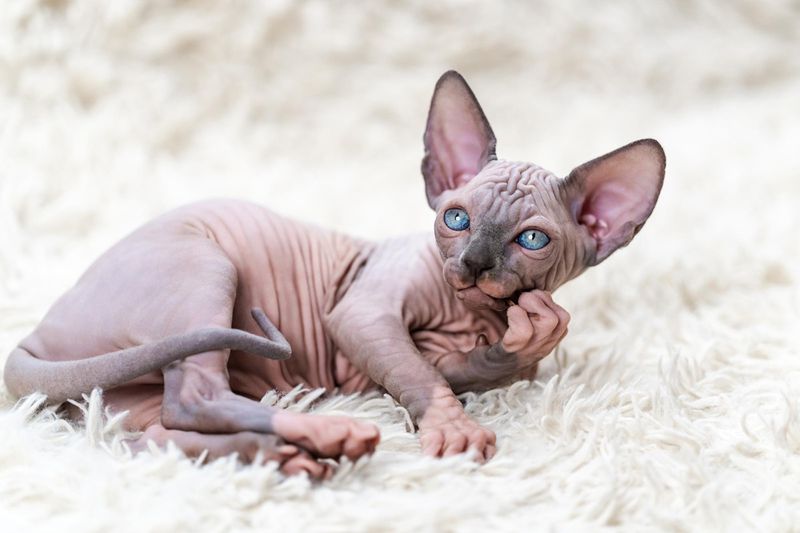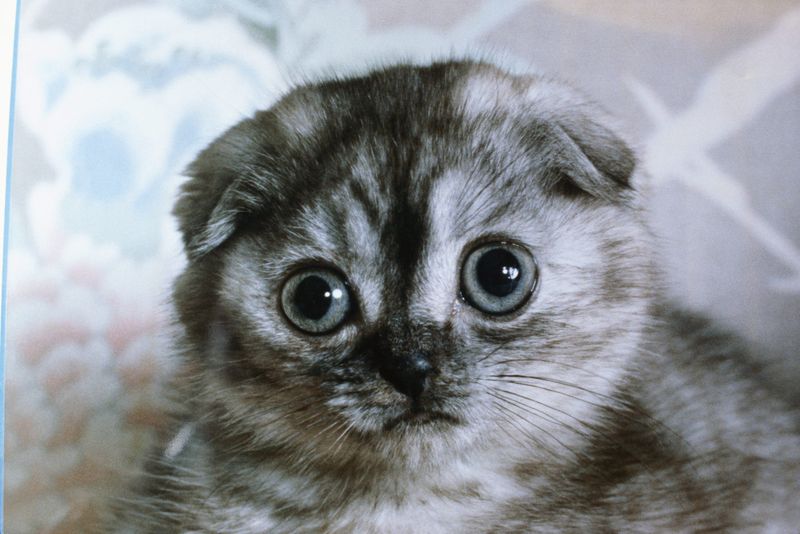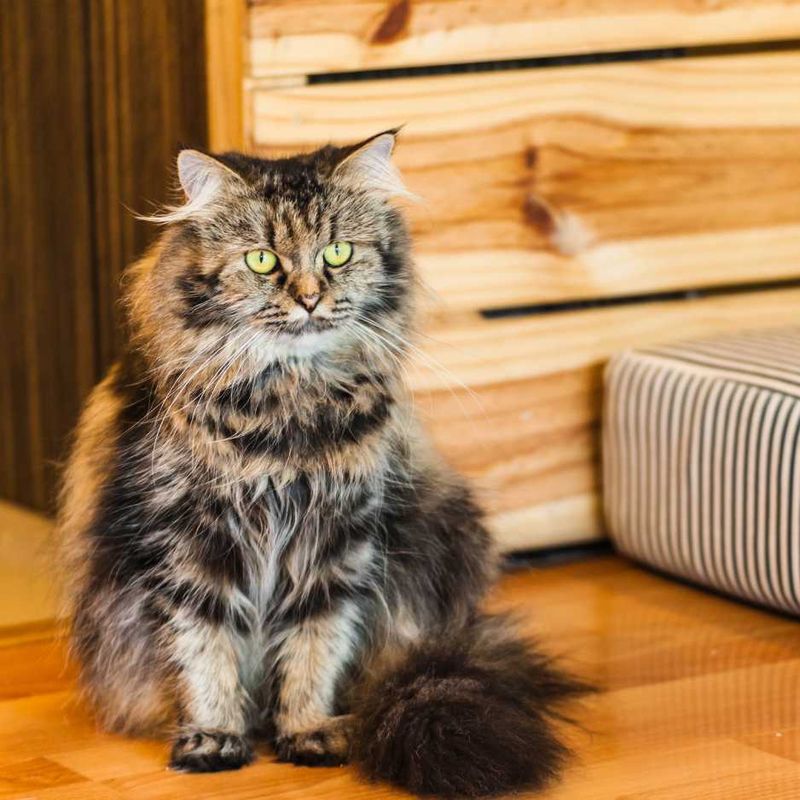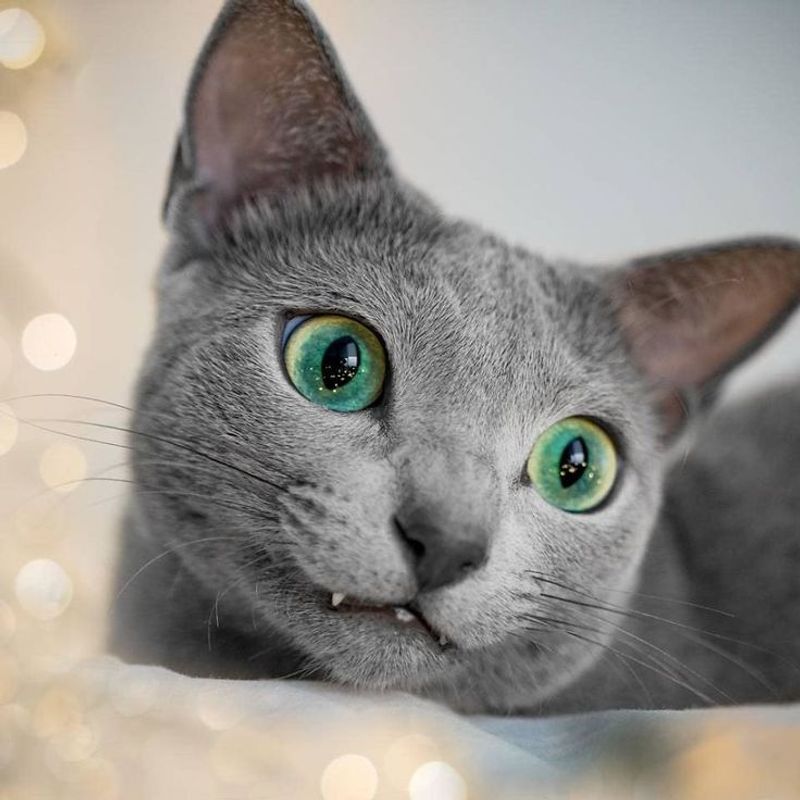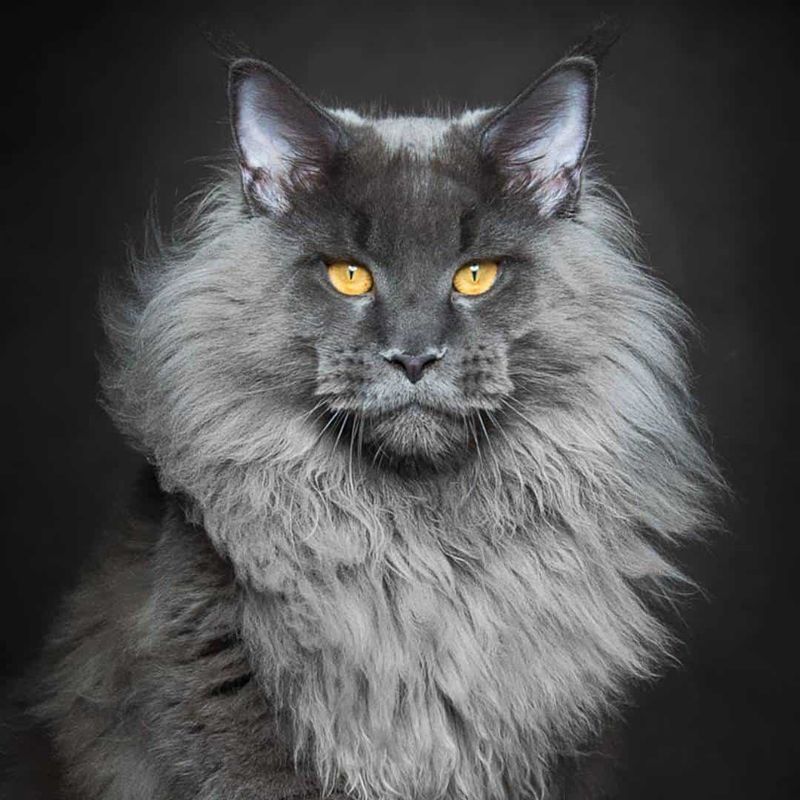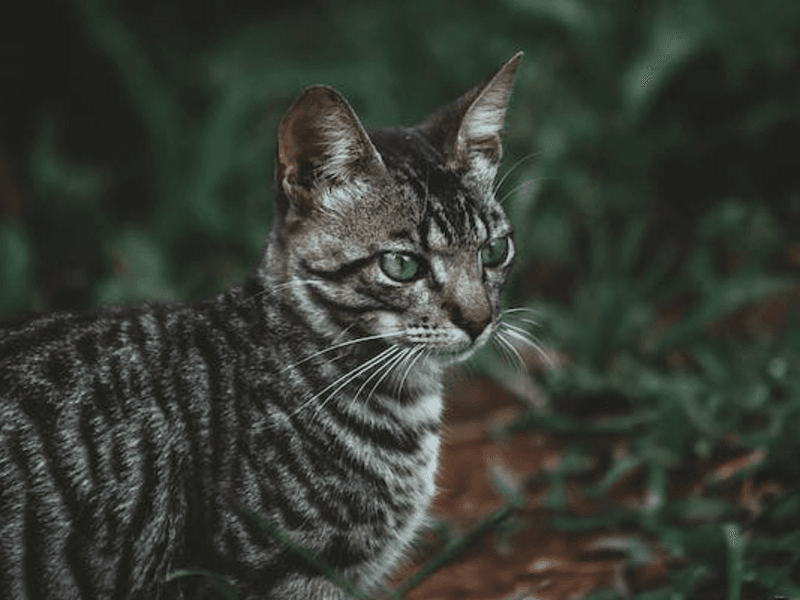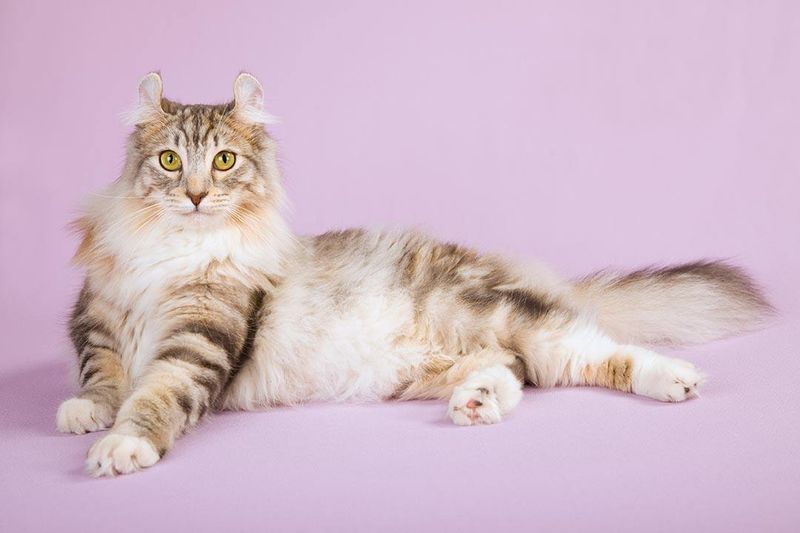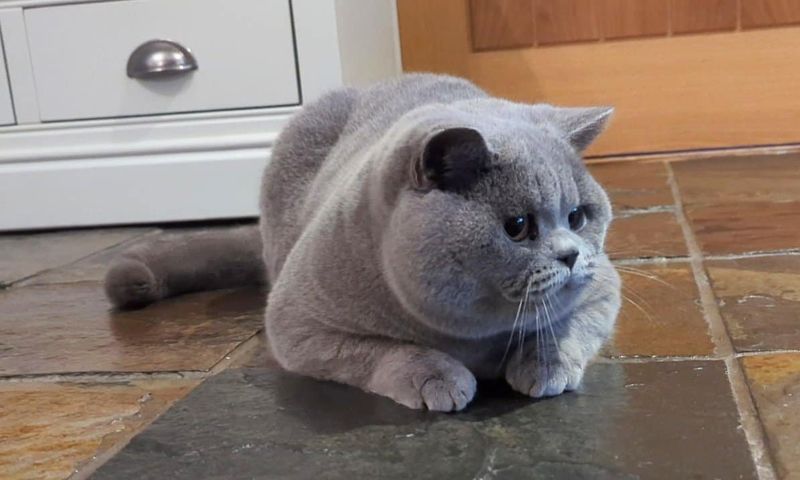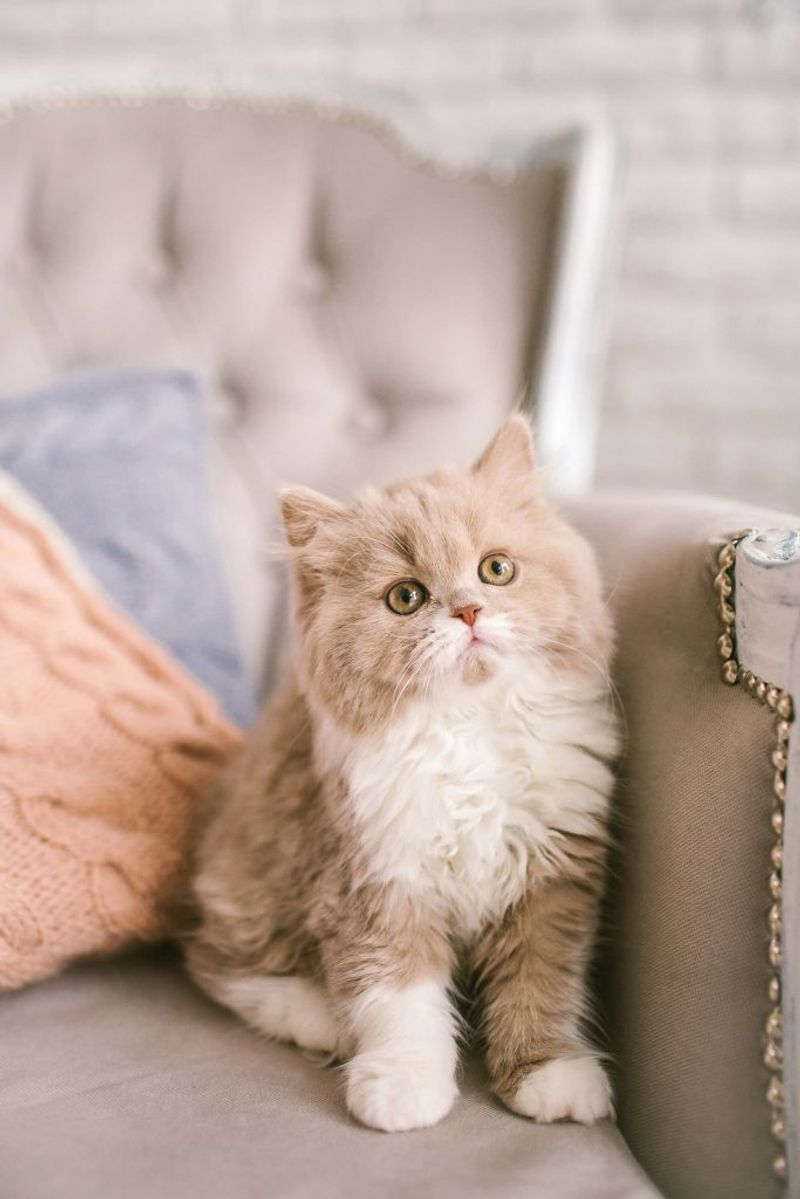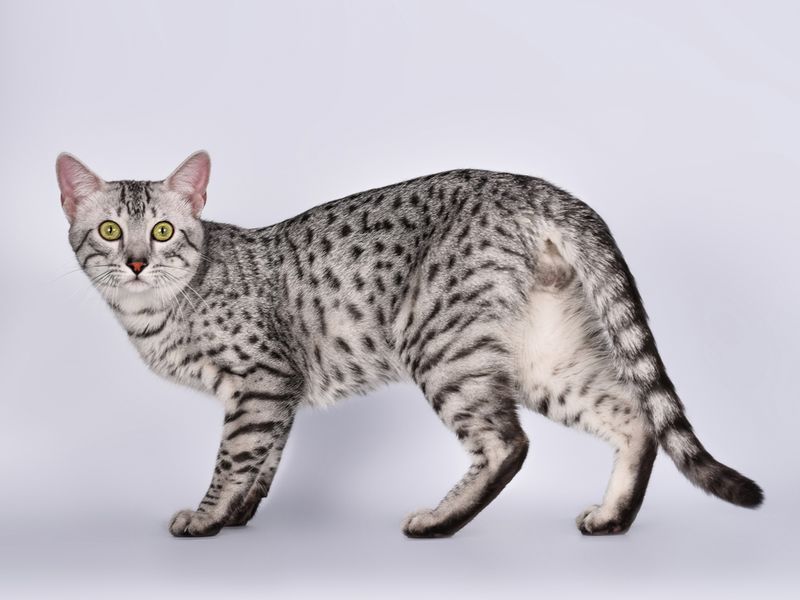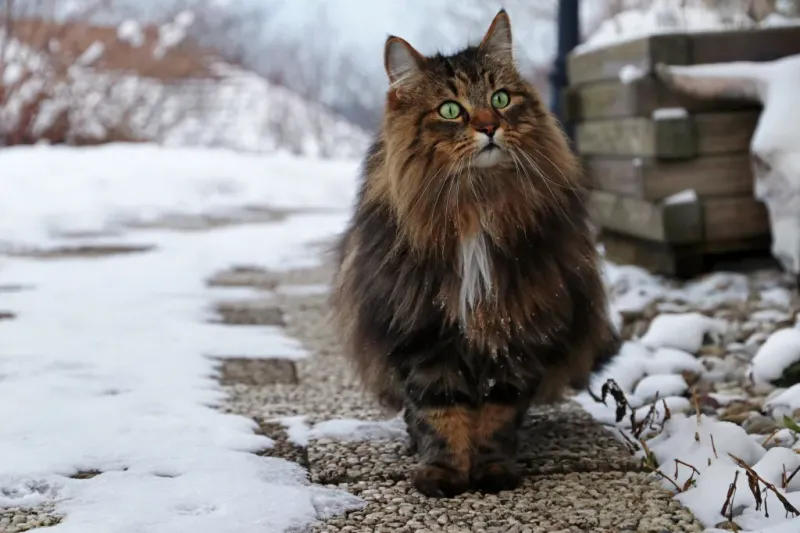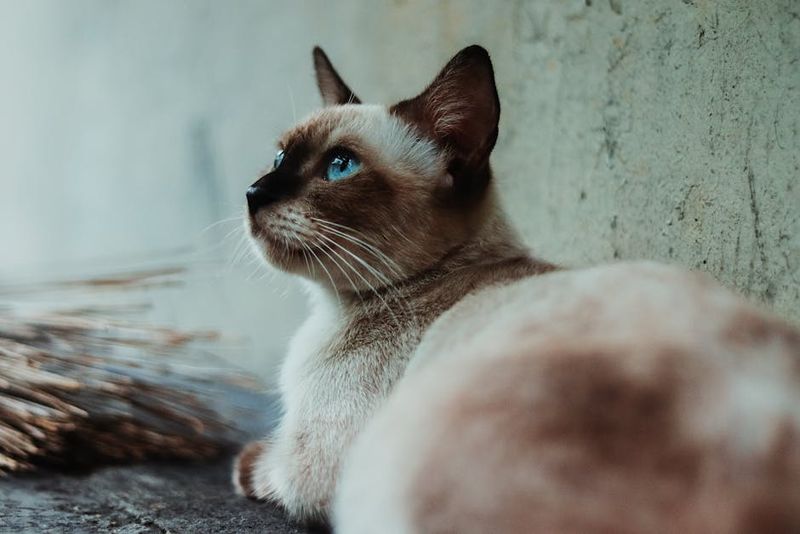📖 Table of Content:
Cat lovers worldwide are often willing to spend big bucks for the perfect feline companion. Some rare breeds come with price tags that might make your wallet flinch! From exotic looks to rare genetic traits, these high-end kitties offer something special for those who can afford them. Ready to discover which cats command top dollar in the pet world?
1. Ashera
The Ashera cat holds the crown as possibly the most expensive cat breed in the world, with prices reaching up to $125,000. This ultra-rare hybrid combines African Serval, Asian Leopard Cat, and domestic cat genes.
Only a handful are bred each year, making them incredibly exclusive. They grow to an impressive 30 pounds and stand tall with exotic, wild-looking spots and stripes.
Asheras live up to 25 years, longer than most cats. Despite their wild ancestry, they’re known for friendly personalities and dog-like loyalty, making that astronomical price tag somewhat more understandable for the ultra-wealthy.
2. Savannah
Born from the union of African Servals and house cats, Savannah cats showcase a wild, spotted look. The cost of early generations ranges from $10,000 to $25,000, with F1 Savannahs, carrying half Serval genetics, commanding top dollar.
Tall and lean with spotted coats, these athletic cats can jump up to 8 feet high from a standing position! Many owners compare their personalities to dogs.
Savannahs form strong bonds with their humans and can even learn to walk on leashes. Their rarity and exotic appearance make them highly sought after by affluent cat enthusiasts.
3. Bengal
With coats that mirror their Asian Leopard Cat ancestors—spotted or marbled—Bengal cats add wild beauty to any home. Prices vary from around $1,500 for pet-quality kittens to $10,000 for top-tier show Bengals.
Their coats feature a unique glitter effect that makes them shimmer in sunlight. Active and playful, Bengals need plenty of stimulation to keep their intelligent minds busy.
Many Bengals enjoy water, unlike typical cats, and will happily join you for shower time or play in sinks. Their exotic looks combined with domestic cat temperaments make them popular among those wanting a wild-looking but manageable companion.
4. Khao Manee
From Thailand’s royal courts comes the Khao Manee, an ancient breed once owned exclusively by Thai royalty. These all-white cats with striking odd-colored eyes (often one blue, one gold) can cost between $7,000 and $11,000.
The name Khao Manee translates to “white gem,” perfectly describing their appearance. Their rarity outside Thailand contributes significantly to their high price tag.
Believed to bring good fortune to their owners, these cats have appeared in ancient Thai manuscripts dating back hundreds of years. Khao Manees are social, intelligent, and surprisingly vocal, often carrying on “conversations” with their human companions throughout the day.
5. Peterbald
Peterbald cats, with their wrinkled hairless bodies and long, slender limbs, can cost between $1,700 and $5,000. These Russian treasures were first bred in St. Petersburg in 1994, resulting from a cross between Oriental Shorthairs and Don Sphynx cats.
Unlike other hairless breeds, Peterbalds have a distinctive body shape with an elegant, ballet dancer-like appearance. Their skin can range from completely bald to having a fine peach-fuzz coating.
Extremely affectionate and social, they hate being alone and will follow their owners everywhere. Their high metabolism means they eat more than most cats, adding to the lifetime expense of owning this unique breed.
6. Sphynx
The Sphynx cat’s wrinkled, hairless appearance makes it one of the most recognizable expensive breeds, typically costing between $1,500 and $6,000. Despite their naked look, their skin actually feels like warm suede and requires regular cleaning to remove body oils.
These cats run hotter than most breeds, with a body temperature about 4 degrees higher than furry cats. Social butterflies by nature, Sphynx cats demand attention and love to perform for their humans.
Their lack of fur means they need sweaters in cold weather and sunscreen in summer. Contrary to popular belief, they’re not completely hypoallergenic – the allergens are in their skin oils rather than nonexistent fur.
7. Scottish Fold
Known for their charming folded ears and expressive owl-like look, Scottish Folds typically cost from $1,500 to $3,000. This unique trait originated from a genetic mutation in a Scottish barn cat named Susie back in 1961.
Not all kittens in a litter develop folded ears – those that do command higher prices. These medium-sized cats have round faces and large, expressive eyes that enhance their adorable look.
Scottish Folds often sit in the “Buddha position” with their paws tucked under their bodies. Famous owners include Taylor Swift and Ed Sheeran, which has only increased the breed’s popularity and price in recent years.
8. Persian
With their plush long coats and sweet, flattened faces, Persian cats have adorned royal homes for centuries. Expect to pay between $3,000 and $5,500 for show-quality Persians, while pet-quality kittens usually begin at $1,300.
Daily grooming is essential for their dense, silky fur that can grow up to 8 inches long. Their laid-back personalities match their royal history – they prefer quiet environments and gentle handling.
The Persian’s distinctive facial shape requires special care to keep facial folds clean. These cats have been featured in art since the 1600s, making them one of the oldest recognized fancy cat breeds and a longtime symbol of luxury and refinement.
9. Russian Blue
Russian Blues stand out with their plush, silvery-blue double coats and striking emerald green eyes, typically costing between $800 and $3,000 from reputable breeders. These cats originated from Russia’s Archangel Isles and were once favorites of Russian czars.
Their dense fur stands out from their body at a 45-degree angle, creating a unique bluish sheen. Quiet and reserved, they form deep bonds with their families but often hide when strangers visit.
Russian Blues are considered hypoallergenic because they produce less of the Fel d 1 protein that triggers allergies. Their intelligence is remarkable – many owners report these cats learning to open doors and cabinets to get what they want.
10. Maine Coon
Holding the title of largest domestic cat breed, Maine Coons’ males can reach 25 pounds. Prices generally range from $1,000 to $2,500, but champion pedigrees can command up to $8,500.
Their tufted ears, bushy tails, and shaggy coats help them survive harsh New England winters. Despite their imposing size, they’re known as “gentle giants” with playful, kitten-like personalities that last throughout their lives.
Maine Coons develop slowly, not reaching full size until 3-5 years old. Their unique chirping trills instead of typical meows and fascination with water (some even join their owners in showers) add to their appeal among wealthy cat enthusiasts.
11. Toyger
Sporting vibrant orange coats and bold black stripes, Toygers resemble little tigers stalking the living room. Prices vary from $1,500 to $5,000, with show-quality specimens demanding higher prices.
Created in the 1980s by breeder Judy Sugden, Toygers resulted from crossing domestic shorthairs with Bengal cats. Their name combines “toy” and “tiger,” perfectly describing their appeal.
Beyond their wild looks, Toygers have friendly, outgoing personalities. The breeding program continues to develop more tiger-like features, including circular face stripes and a stalking gait. Part of the purchase price often supports wild tiger conservation efforts.
12. American Curl
American Curls captivate with their distinctive ears that curl backward in an elegant arc, giving them a perpetually surprised expression. These unique felines cost between $1,000 and $3,000, with show-quality cats commanding premium prices.
The ear-curling mutation first appeared in a stray black cat named Shulamith in California in 1981. Kittens are actually born with straight ears that begin curling within 48 hours, reaching their final position at around 4 months.
American Curls remain playful and kitten-like well into adulthood. Their ears require gentle handling, but otherwise, they’re remarkably healthy with few breed-specific issues, potentially saving on long-term veterinary costs despite the initial investment.
13. British Shorthair
These blue-gray British Shorthairs bring teddy bear vibes with their round faces and thick fur. Prices generally fall between $1,500 and $2,500, with unique colors reaching up to $3,500.
One of the oldest cat breeds, they descended directly from cats brought to Britain by Romans. Their popularity soared after being featured as the Cheshire Cat in Alice in Wonderland.
British Shorthairs are known for their calm, undemanding nature – they rarely meow and prefer to stay on the ground rather than climb. While not overly cuddly, they show affection by following owners from room to room and sitting nearby, making them perfect companions for busy professionals willing to invest in a premium pet.
14. Selkirk Rex
Selkirk Rex cats sport luxurious curly fur that’s irresistibly soft to touch, earning them the nickname “cats in sheep’s clothing.” These woolly felines cost between $1,000 and $2,500, with rarer colors fetching higher prices.
Unlike other curly-haired breeds, the Selkirk’s curls are dominant genetically, not recessive. Their unique coat can be either short or long, with the longer-haired varieties displaying spectacular curly whiskers too.
Selkirks have patient, loving personalities that match their teddy bear appearance. The breed began with a single curly-haired shelter cat named Miss DePesto in 1987, making this one of the newest recognized cat breeds with a price that reflects its relative rarity.
15. Egyptian Mau
As the sole naturally spotted domestic cat breed, Egyptian Maus are truly one of a kind. Prices range from $900 to $2,500, with the rare silver variants commanding premium rates.
The fastest domestic cats, they can run up to 30 mph thanks to longer hind legs and a unique flap of skin extending from flank to back knee. Their spots aren’t just on their fur – they have spotted skin underneath too!
Ancient Egyptian artwork dating back 3,000 years depicts cats identical to today’s Egyptian Maus. They have a special pouch of skin hanging from their bellies (like cheetahs) that allows greater flexibility when running and jumping.
16. Norwegian Forest Cat
Straight from the pages of a Viking tale, Norwegian Forest Cats sport massive builds and dense, water-repellent fur. You’ll find them priced between $800 and $1,500, with show champions reaching $3,000.
Their ancestors likely traveled on Viking ships as mousers over a thousand years ago. Built for harsh Nordic winters, they have tufted ears, snowshoe-like paws, and bushy tails nearly as long as their bodies.
Despite their wild appearance, they’re gentle family cats. Norwegian Forest Cats develop slowly, taking up to five years to reach full maturity. Their impressive climbing abilities earned them mentions in Norse mythology as “fairy cats” capable of climbing sheer rock faces.
17. Siamese
The striking blue eyes and darkening color points of Siamese cats make them instantly recognizable. Show-quality individuals from top bloodlines sell for $1,000 to $2,500, with rarer shades bringing in even more.
Originally from Thailand (formerly Siam), these cats were so treasured that stealing one was punishable by death. Their distinctive voice is unmistakable – they’re famous for being extremely vocal and expressive.
Temperature-sensitive genes cause their unique coloration – body parts that stay cooler develop darker fur. Siamese form intense bonds with their humans and can become depressed without adequate attention. Their intelligence makes them easy to train for tricks and even walking on leashes.
